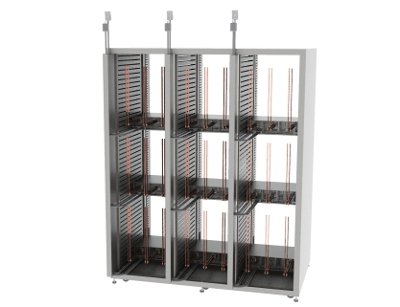The Open Compute Project, an open-source platform for data center hardware and infrastructure design started by Facebook, has released a second version of its Open Rack specification – a specification developed through the open-source platform to accommodate modern needs hardware racks available on the market reportedly do not accommodate.
The new v1.0 spec (the first one was v0.5) focuses exclusively on single-column rack design, allows for higher inlet air temperature, accommodates more configurations of network switches and features other improvements over its predecessor.
Facebook has deployed this version of the rack in its data centers for testing and is gathering comment from the data center community on the new spec, according to a post on OpenCompute.org by Facebook’s Pete Bratach.
The spec raised inlet-air temperature to 35C, which Bratach said reflected the Open Compute server design and temperatures in “real-world” data centers. The compute chassis now range from 1U to 10U in height, but these are special OpenUs.
The chassis are supported by L-shaped brackets, snapping directly into vertical rack posts. The brackets can be installed without tools, which is one of the key objectives of the Open Rack project.
“You should be able to walk up to that rack, plug it in and walk away,” Frank Frankovsky, director of hardware design and supply chain at Facebook, told us earlier this year, after the Open Rack project was announced.
According to Bratach, Open Rack is an abstraction layer between the rack and the IT equipment, instead of being just another server cabinet. People at Open Compute like to refer to it as a hardware API.
It has a modular equipment bay that can contain compute, storage and other hardware, all of which can be configured in a multitude of ways.
The rack also provides a unique way to power the IT equipment: “power shelves” draw power from bus bars attached to the rack. If AC power is interrupted, the shelves switch to DC power from either a battery backup cabinet (design released through Open Compute) or lithium-ion battery packs.

